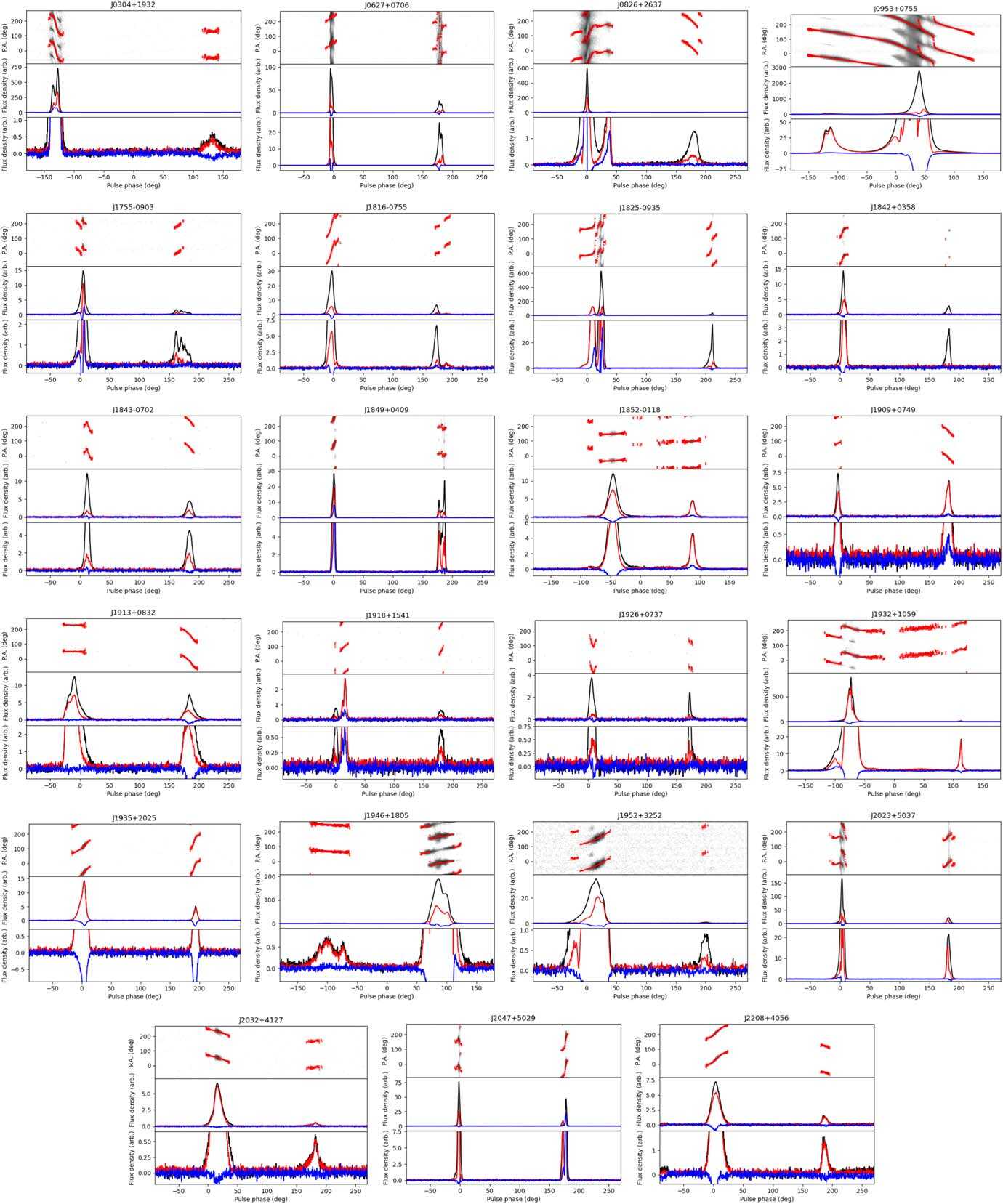

Researchers Reveal Complex Emission Geometry in Pulsars with Interpulses
Using the data obtained by the Five-hundred-meter Aperture Spherical radio Telescope (FAST), a research team at the Xinjiang Astronomical Observatory (XAO) of the Chinese Academy of Sciences (CAS) has unveiled new insights into the emission geometry of pulsars by analyzing a rare population of sources that exhibit interpulse radiation.
The results were published in The Astrophysical Journal (ApJ, 2025, 983, 179).
Unlike most radio pulsars, whose narrow pulse profiles lead to significant uncertainties in emission geometry measurements, interpulse pulsars provide a broader observational window. This enables more robust measurements of both geometric parameters and emission properties.
Applying the Rotating Vector Model (RVM), Dr. SUN Shengnan and her collaborators measured the magnetic inclination angles and impact angles for 16 of 23 pulsars with interpulse radiation. These measurements revealed that the radiation beams are not uniformly filled across their angular extent: beam filling factors span a wide range from 0.27 to 0.99. The traditional geometric and relativistic methods used to calculate pulsar radiation heights assume complete beam filling, while the results suggest that these methods may need to be revised to account for the effects of partial beam filling.
The researchers found a positive correlation between pulse width and impact angle, supporting the “fan-beam” model of pulsar emission. They also assessed the limitations of conventional methods used to estimate radio emission heights, finding significant uncertainties. To improve the accuracy of these estimates, the researchers introduced a modified RVM fitting procedure that incorporates phase delay as a free parameter. This innovation allowed them to determine the relative heights of main pulse and interpulse emission regions without assuming a specific beam geometry, with height differences ranging from several tens to several thousand kilometers.
Additionally, several pulsars in the sample exhibited exceptionally wide radiation beams, pointing to the possibility that radio emission may occur at higher altitudes or even outside the conventional polar cap region.
These results provide important constraints on the structure of pulsar emission regions and the geometry of the emission beams, contributing to a deeper understanding of pulsar magnetospheres.
This work was supported by the National Natural Science Foundation of China (Basic Science Center Program and Youth Science Fund) and the National Key Research and Development Program of China.

Figure: Polarization profiles for 23 pulsars with IP emissions. The PPAs of the average profile (red dots), superimposed on the PPAs of single pulses (black dots), are shown in the upper panels. The total intensities (black lines), linear polarizations (red lines), and circular polarizations (blue lines) are shown in the middle panels. The zoomed-in polarization profiles are presented in the bottom panels.
Attachment Download: